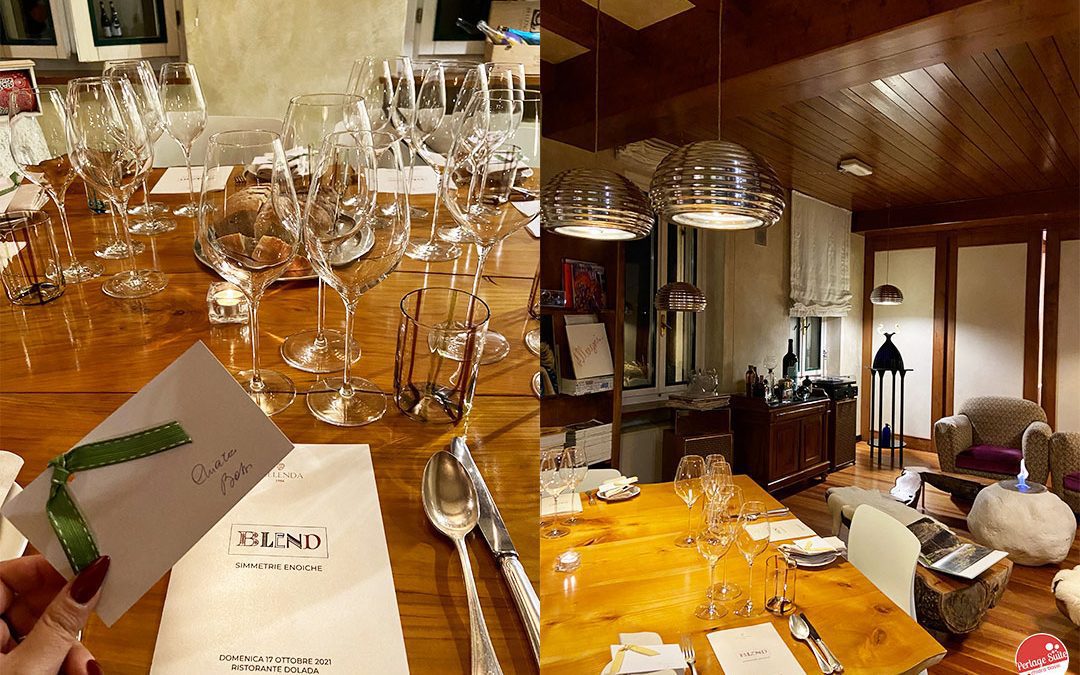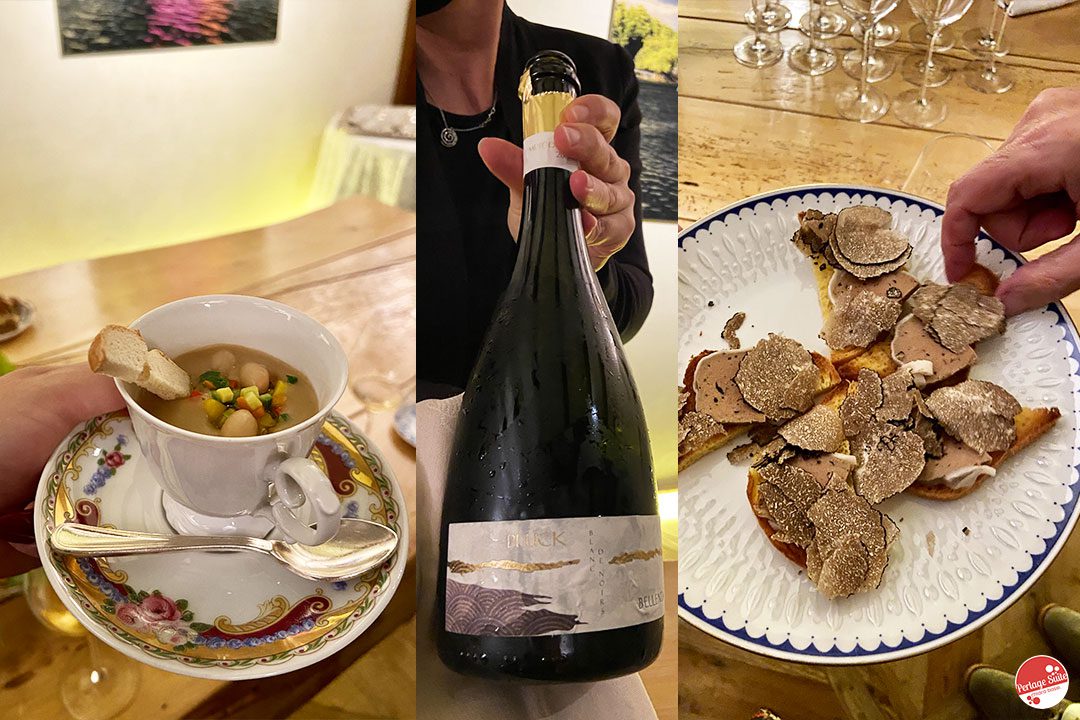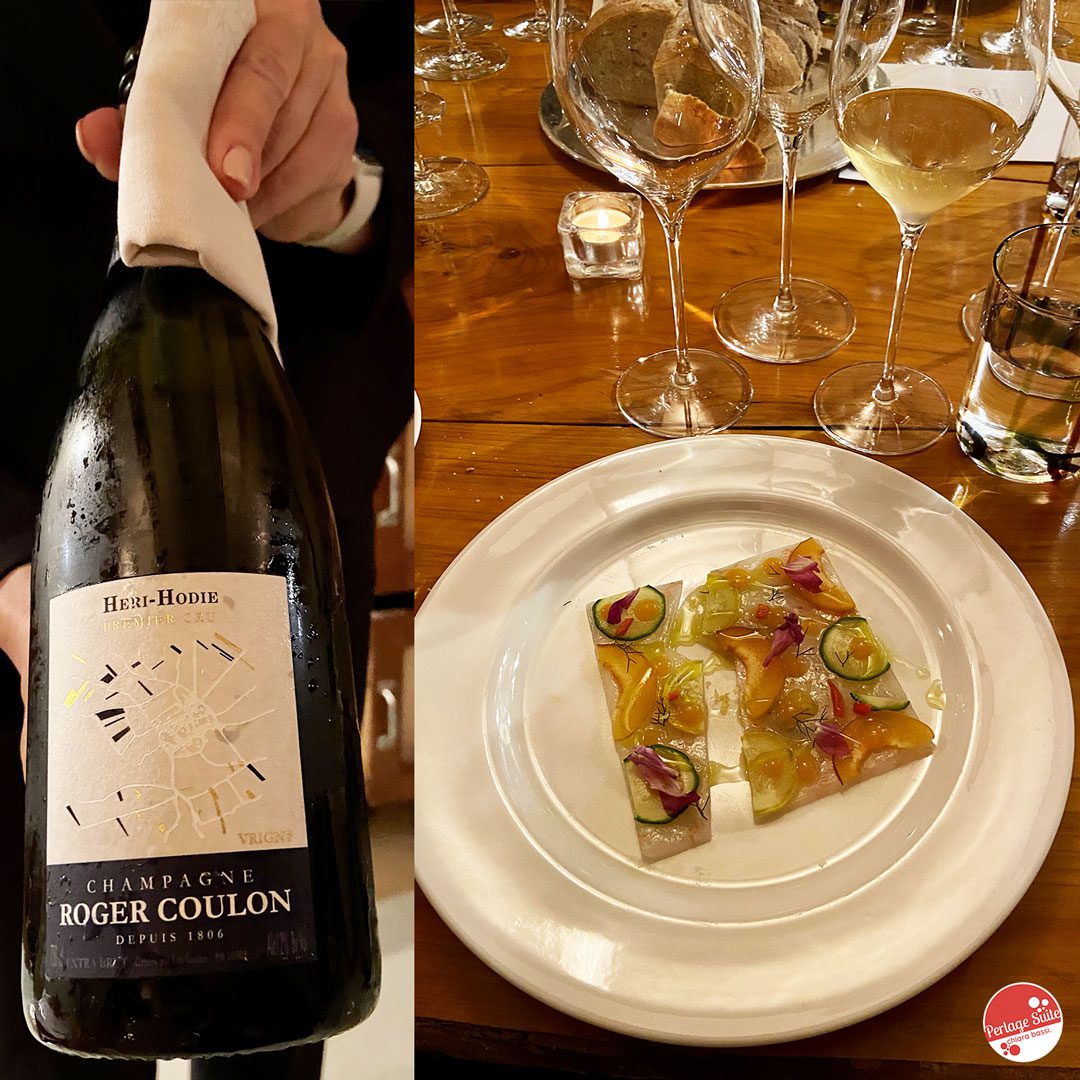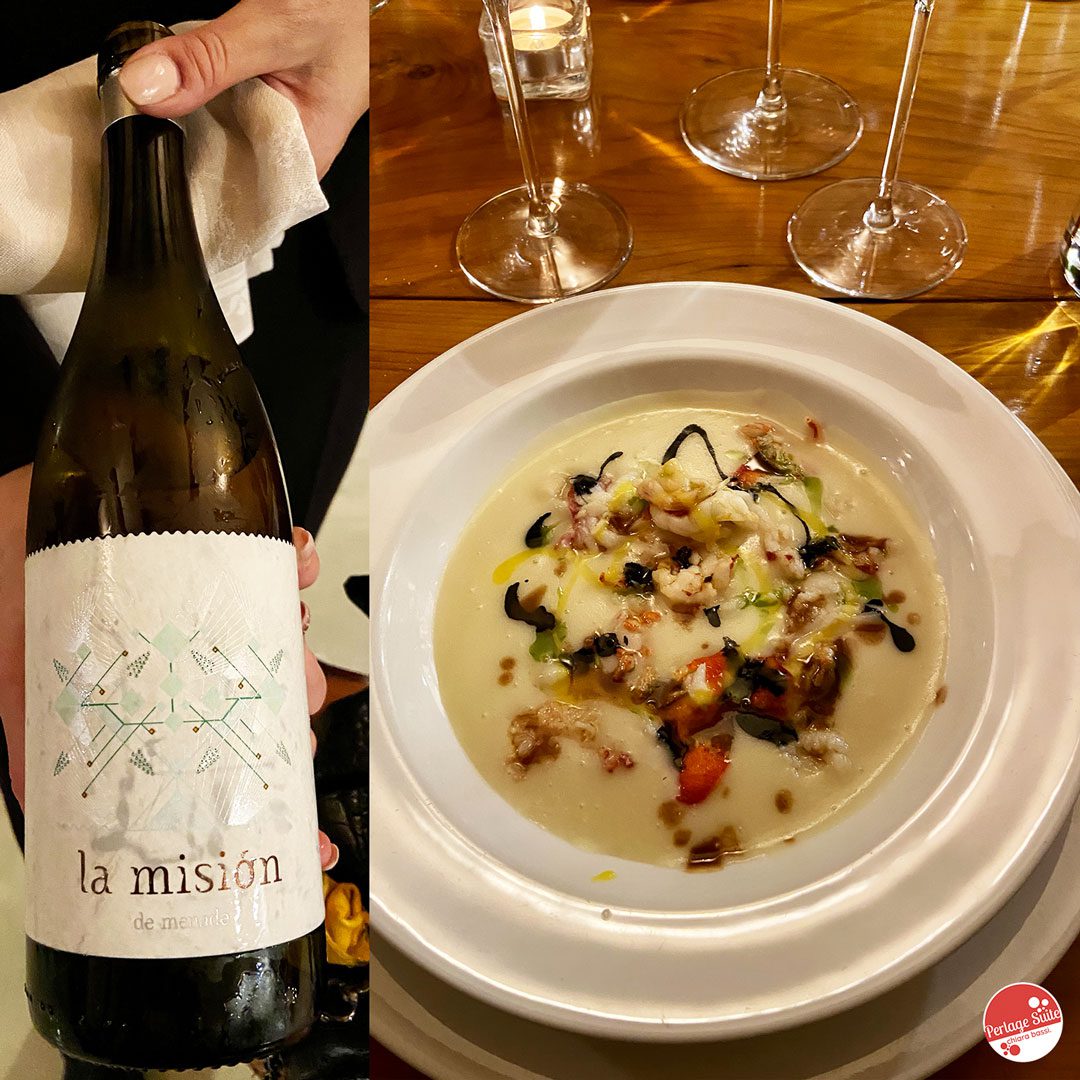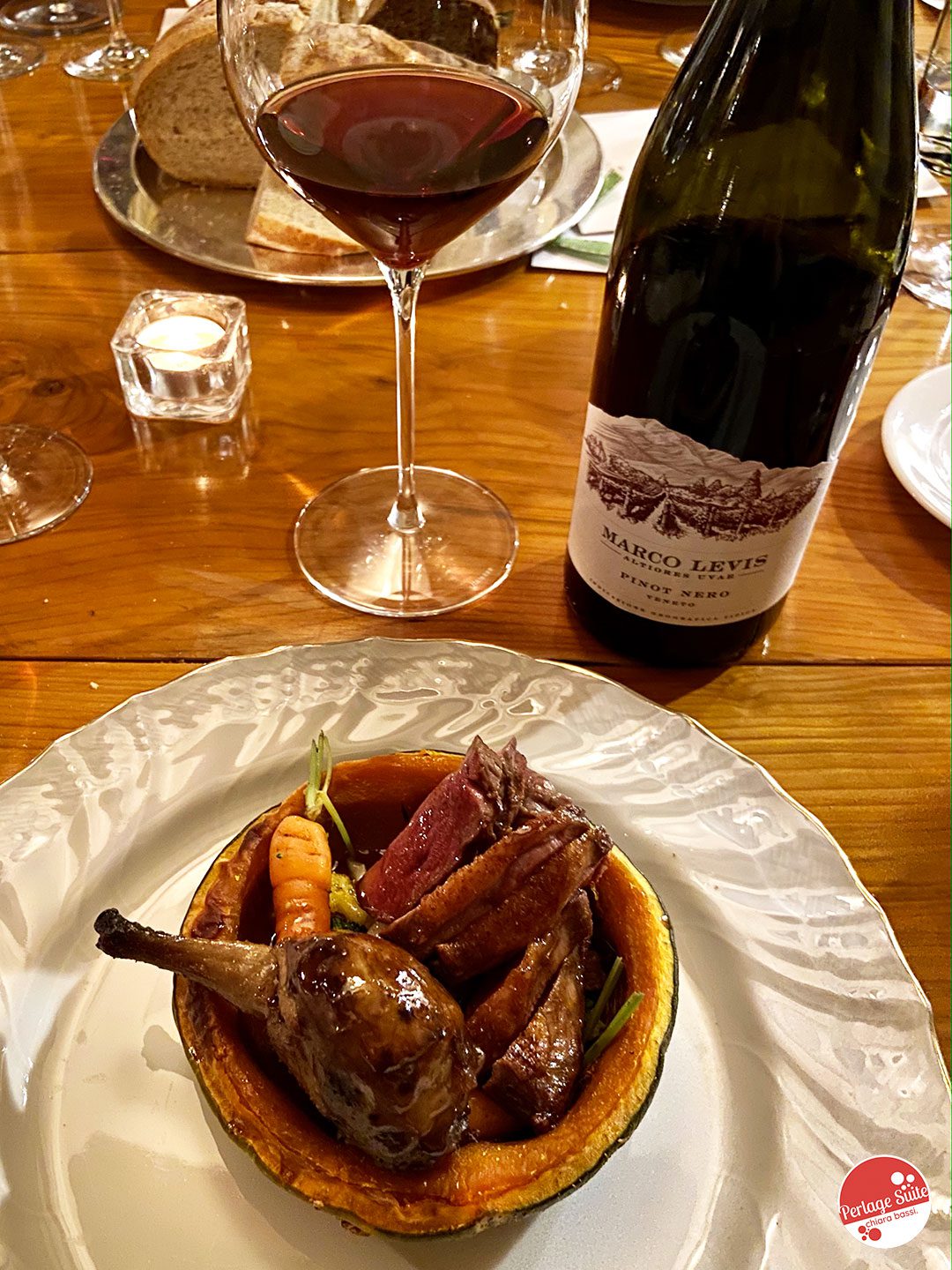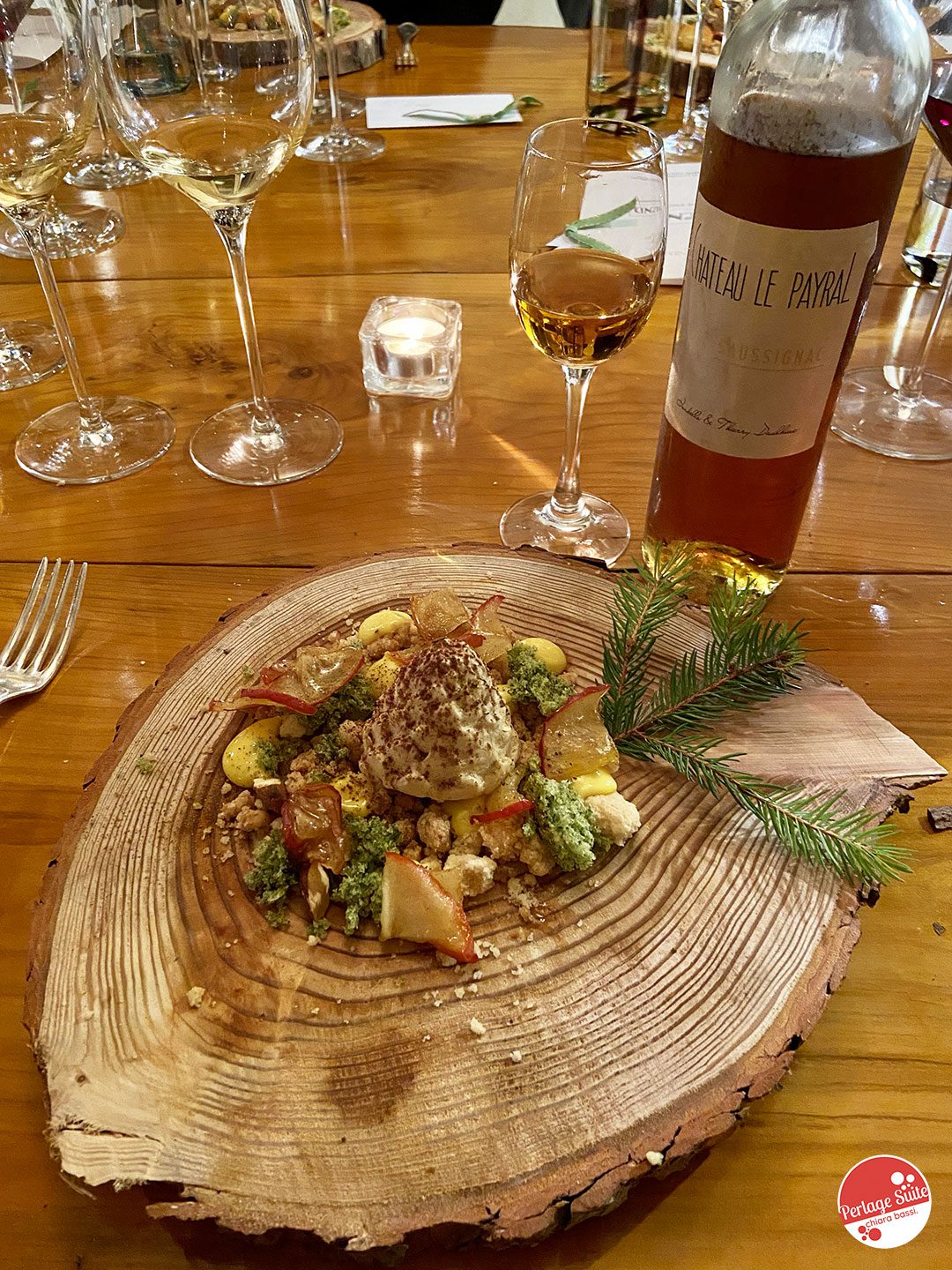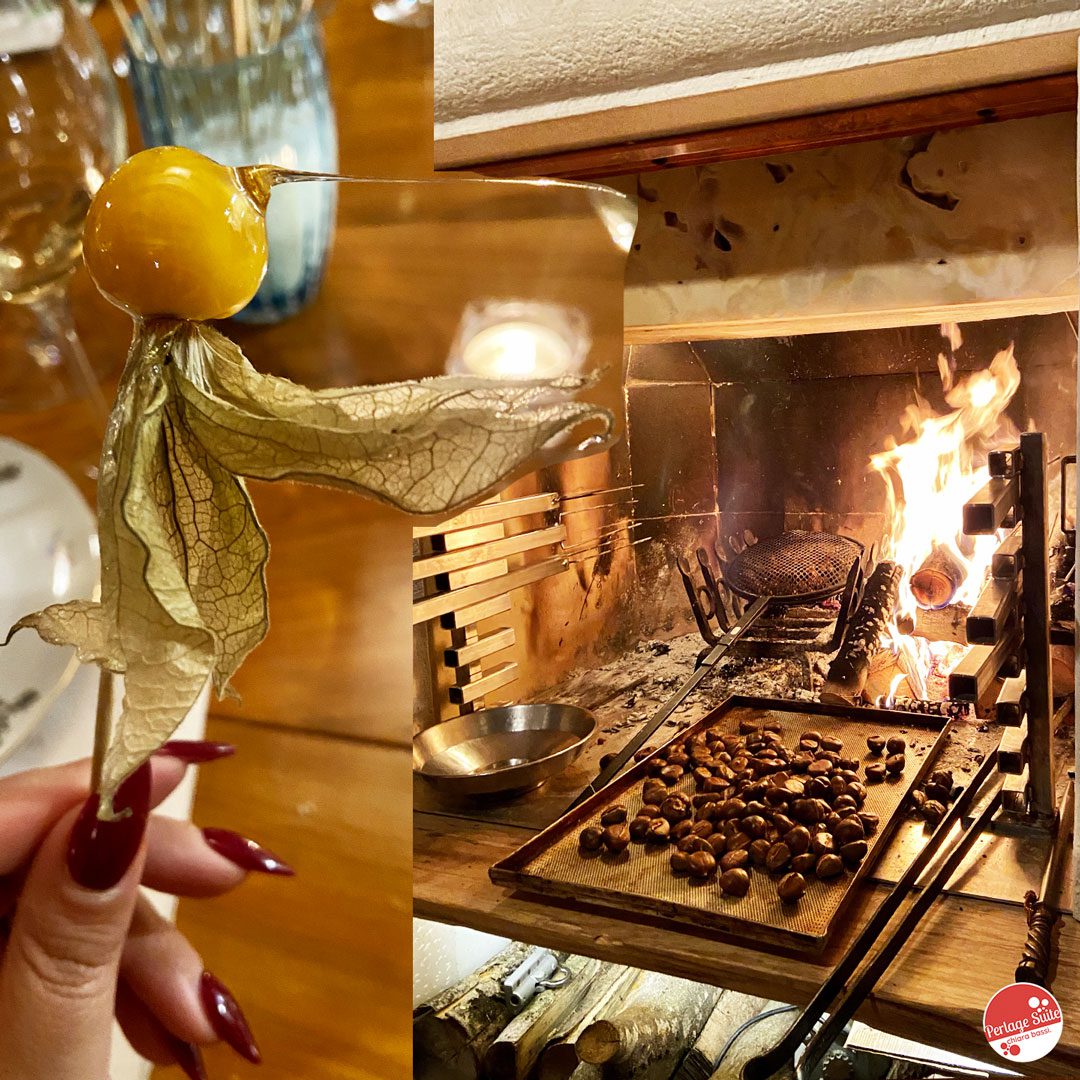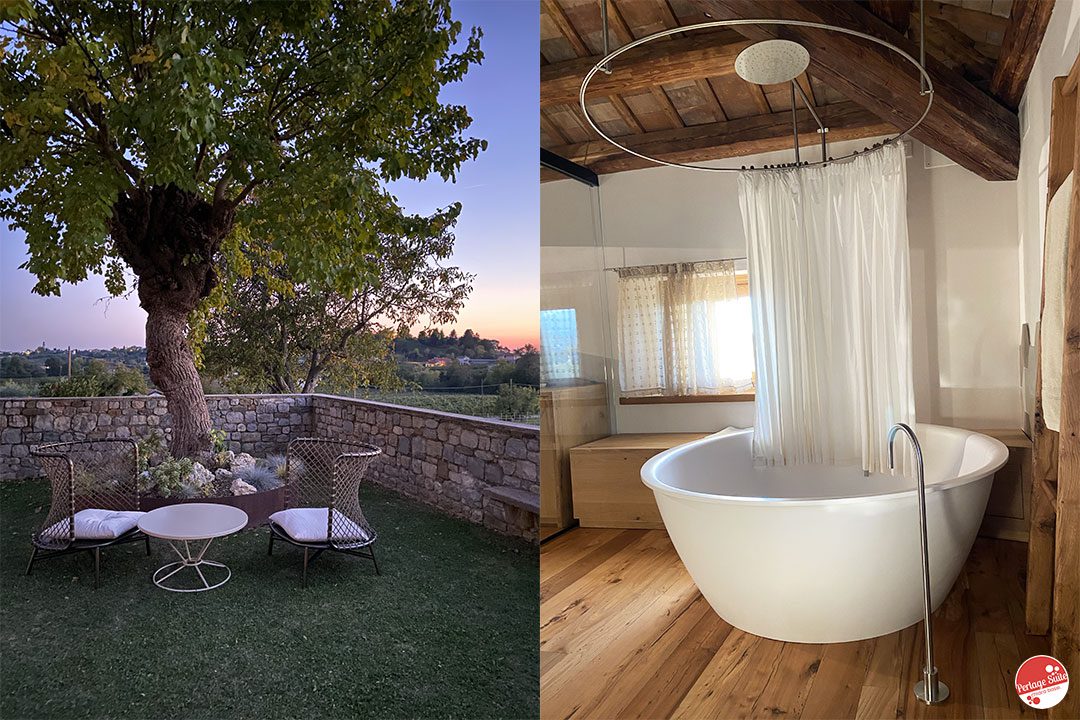One thing I often repeat is that where we choose to live defines who we are and, consequently, how much beauty we are able to bring to the world. We often forget that we are guests on a time-tested planet and, as such, we should tiptoe so as not to disturb. Most people are not the least bit interested in creating beauty, distracted by the ugliness of a crisis of values that now reigns over contemporary man. In this context I find that Umberto Cosmo e Riccardo De Prà are two similar figures, who need to 'feel' the space in which they move, admire its colours and respect its boundaries as they contribute to the beauty of the world. That is why I find the choice to start this Blend 2021 by Bellenda from Dolada Restaurant in Alpago perfect: in a basin nestled between the Pre-Alps, Lake Santa Croce invites you to enjoy those precious organoleptic symmetries that have come together here.
Here are my tasting notes of a special dinner in the heart of the Alpago region. I sincerely hope to suggest aromas and flavours you will fall in love with.
Dolada Restaurant, Alpago: The famous patora and woodcock pate and Bellenda's Pluck Brut Nature Blanc de Noirs 2012
That Bellenda makes great classic method sparkling wines on this blog I have told all sorts of stories. So much so that among the wines I chose for my wedding was his Talento Brut Rosé 2007. The Pluck Brut Nature Blac de Noirs 2012, a new product that deserves to be spread as widely as possible, still managed to amaze me.
Wine. The Pinot Noir from which this sparkling wine is made is cultivated in the hills. The vines are trained using the guyot system with a density of about 5,000 plants per hectare and are rooted in a mixed clay-limestone soil. The climate is temperate with cold winters and hot summers and there is excellent ventilation and a wide temperature range. Between late August and early September, the grapes are harvested by hand. Once the grapes arrive at the winery, they are destemmed and undergo a soft pressing. The must, after static decantation, ferments in steel at a controlled temperature. Secondary fermentation takes place in the bottle and maturation on the lees lasts 100 months. Disgorgement and refilling with the same wine without dosage follows.
My tasting. It is bright golden yellow with a very fine, numerous and persistent perlage. The nose is exceptional, intense and complex. Notes of candied orange, white chocolate, brioche with buffalo butter, almond brittle and vanilla are discernible. In the mouth it is elegant and consistent, balanced, mineral, structured and with a nice length. I would like to taste it with a more dated disgorgement because in my opinion it has incredible potential.
The pairing. I found it perfect for the woodcock pate with truffle. The cream of beans was really delicious, but too delicate and, for me, the wine covered it up a bit.
Now subscribe to my newsletter or scroll down the page to continue reading the article. 😉
After this fabulous welcome drink, we sat down for dinner. We were divided into small tables, each with a journalist, a producer, and a key Bellenda figure. The rooms at Ristorante Dolada are not only exceptionally well-kept, but also intimate and relaxing: Riccardo De Prà welcomes you in a warm ambience that smells of family.
Dolada Restaurant, Alpago: Carpaccio of scampi, vegetables, fruit and caviar and Champagne Heri-Hodie by Champagne Roger Coulon
Champagne that I already knew from a Maison that I adore and that turned out to be among the best of the Modena Champagne Experience 2021. Heri-Hodie is not my favourite, which remains Esprit de Vrigny, but I must say that this one is also exceptional. The disgorgement maybe a little too recent, but by now you know I like dated ones if the bottles deserve it! And all Roger Coulon bottles deserve it!
Wine. The pinot meunier used to make this champagne is cultivated on east-facing hillsides in a Premier Cru village in the Montagne de Reims. The vines, which are between 20 and 50 years old, have a density of around 8,500 plants per hectare and are rooted in soil composed of Thanetan sand. Viticulture is organic and climatic conditions influence the cuvée. Yields are limited by short pruning. Harvesting is conducted by hand. Once the grapes arrive at the winery, they are softly pressed. The must is briefly decanted. Spontaneous fermentation takes place in vats and small oak barrels. The 10% then matures in barriques on the fine lees for 10 months. Interestingly, the 90% of reserve wines comes from the 'Reserve Perpetuelle' of pinot meunier stored in steel since 1995. Secondary fermentation takes place in the bottle and maturation on the lees lasts 36 months. This is followed by disgorgement and refilling with a sugar dosage of 3 g/l.
My tasting. It is bright straw yellow with golden reflections. The perlage is fine, numerous and persistent. The nose is delicate, elegant, with notes of candied pear, dried apricot, freshly roasted almonds and fruit cake with custard. In the mouth, it is consistent, overall vertical, with a flavour that veers towards vanilla. Great potential for evolution in the bottle after disgorgement.
The pairing. The langoustine carpaccio was nothing short of delicious and the champagne, with its elegant and delicate aromas, set it off to best advantage.
Dolada Restaurant, Alpago: Dripping lobster, scampi bisque and mountain potatoes and Verdejo La Misìon 2017 from Bodegas Menade
The most 'star-studded' dish of the evening. An incredible explosion of flavours, with perhaps a touch of liquorice. The lobster cooked perfectly, but the richness was the mountain potato velouté with its seasonings.
Wine. The verdeja differs from the verdejo because it has a smaller berry and better resistance to disease. In particular, these vines are pre-phylloxera, i.e. 100-year-old vines. Harvesting is done by hand. Once the grapes arrive at the winery, they undergo whole cluster pressing. Fermentation takes place with indigenous yeasts in stainless steel tanks. The wine is aged for about 10 months partly in 500-litre French oak barrels, partly in 5,000-litre vats and partly in amphorae of different capacities to obtain a unique blend. The wine then rests in the bottle for at least 2 years before being put on the market.
My tasting. This wine is perfect for my taste! It is bright straw yellow, consistent. The nose has notes of citrus, hydrocarbons, balsamic. I recognise notes of dill seeds, iodine, saltiness, graphite, oyster that fade into a smoky finish. In the mouth it is consistent, fat, very fresh, structured and very long.
The pairing. This pairing was the most successful, also due to the fact that it was the wine I preferred among those served at the table. The sapidity of the wine contrasted perfectly with the sweet tendency of the lobster and potatoes.
Dolada Restaurant, Alpago: Pigeon stuffed with foie gras, black truffle in pumpkin and Pinot Nero Veneto IGT 2019 by Azienda Agricola La Maddalena, Marco Levis
This pigeon is worth the trip to Alpago, but I am biased since I am a lover of the genre. Although the most organoleptically 'starred' dish for me remains dripping, this is the one that satisfied me the most.
Wine. The Pinot Noir from which this wine is made is cultivated in the high hills, about 550 m above sea level. The vines are double-trellised and sink their roots into the shallow, predominantly calcareous-marl, gravelly soil with abundant organic matter on the surface. In mid-October, the grapes are harvested by hand. After cold maceration and static decantation, fermentation takes place at a controlled temperature and maturation on the noble lees until the spring following the harvest.
My tasting. It has an impenetrable, consistent ruby red colour. The nose is intense and the fruit dominates over everything. In particular, I recognise a clear scent of morello cherry both fresh and under spirits, wild strawberry, pepper and cloves, and new leather. In the mouth it is very fresh with well-blended tannins, overall soft and drinkable, but it would need to spend a few more years in the bottle to really excite.
The pairing. Correct pairing, although for pigeon I like a completely different kind of wine. In particular, among those tasted at Blend 2021, I would have chosen the Tramivac Principovac 2019 by Ilocki Podrumi. This semi-sweet wine was perfect for me as long as it was served chilled to dampen the sugary sensation. Pigeon, pumpkin and carrots have a distinctly sweet tendency that would have agreed beautifully with the wine, which did not even lack the structure to hold up this dish.
Dolada Restaurant, Alpago: 'Thousand and One Nights' spice strudel crumble and 2004 Saussignac from Chateau Le Payral
This cake is a reinterpretation of the traditional strudel that I loved. Cinnamon ice cream in the shape of a pine cone and candied apples on a crumble with different scents and textures that is really delicious. I would call it a real comfort food, moreover beautifully presented (is it an Alpago tree disc?).
Wine. The hills of Saussignac are home to this niche wine, produced by only fifteen or so producers. It is made from botrytised semillon (60 %), muscadelle (25 %) and sauvignon blanc (15 %) grapes that are harvested by hand between the end of October and mid-November. Alcoholic fermentation takes place in barriques and stops spontaneously when the right sugar/alcohol ratio is reached. It matures in barriques for 12 months and in bottles for 10 years before release. For me, it is a real gem.
My tasting. It is a beautiful deep golden yellow with amber highlights, consistent. The nose is intense and nothing short of delicious with notes of saffron, candied mandarin, passion fruit, dried apricot, fresh dates, salted caramel and lime honey. In the mouth, it is very fresh despite the 150 g/l residual sugar. Long finish of candied mandarin, the one that 'makes the drop'.
The pairing. A perfect match, although ice cream is never easy. The aromaticity of the dessert perfectly matched that of the wine. However, this wine is best with oysters and blue cheeses.
Delicious was the conclusion with lightly caramelised fruit and roasted chestnuts cooked over the fire directly by chef Riccardo De Prà. It reminded me of afternoons with my grandparents when I was a child: my grandmother would make baked apple for my grandfather and caramelised apple for me while huge chestnuts were cooking in the kitchen fireplace. How nostalgic! 😌
The evening ended at the BB Mostofiore in Conegliano in the beautiful room where I was staying, in the bathtub, inhibited by divine perfumes and listening to Gnossiennes by my beloved Erik Satie.
My evening at Alpago ends here. I look forward to telling you about Blend 2021 in the next few days... in the meantime, please read on this article dedicated to Blend 2019?
Cheers 🍷
Chiara
P.S. Riccardo De Prà's parents are fantastic, especially his father who animated the kitchen of the Dolada Restaurant until his son took over.
P.P.S. I invite you to read the article by another journalist present at the dinner: Monica Viani of Famelici Food Travel Blog.

